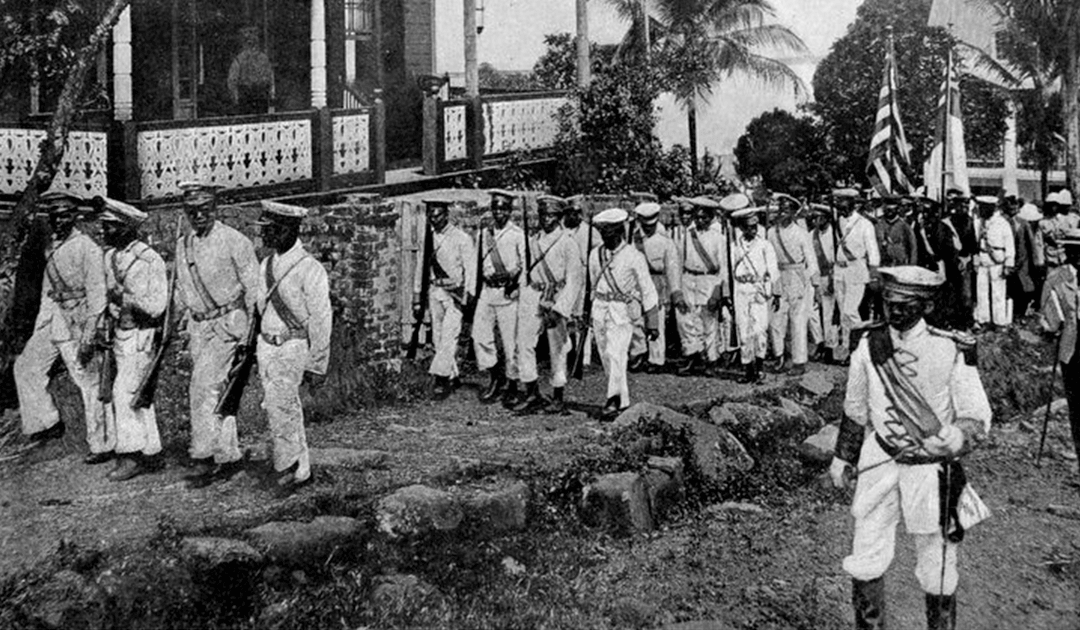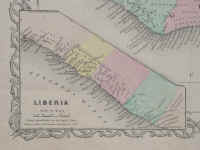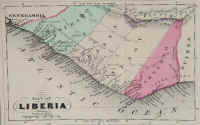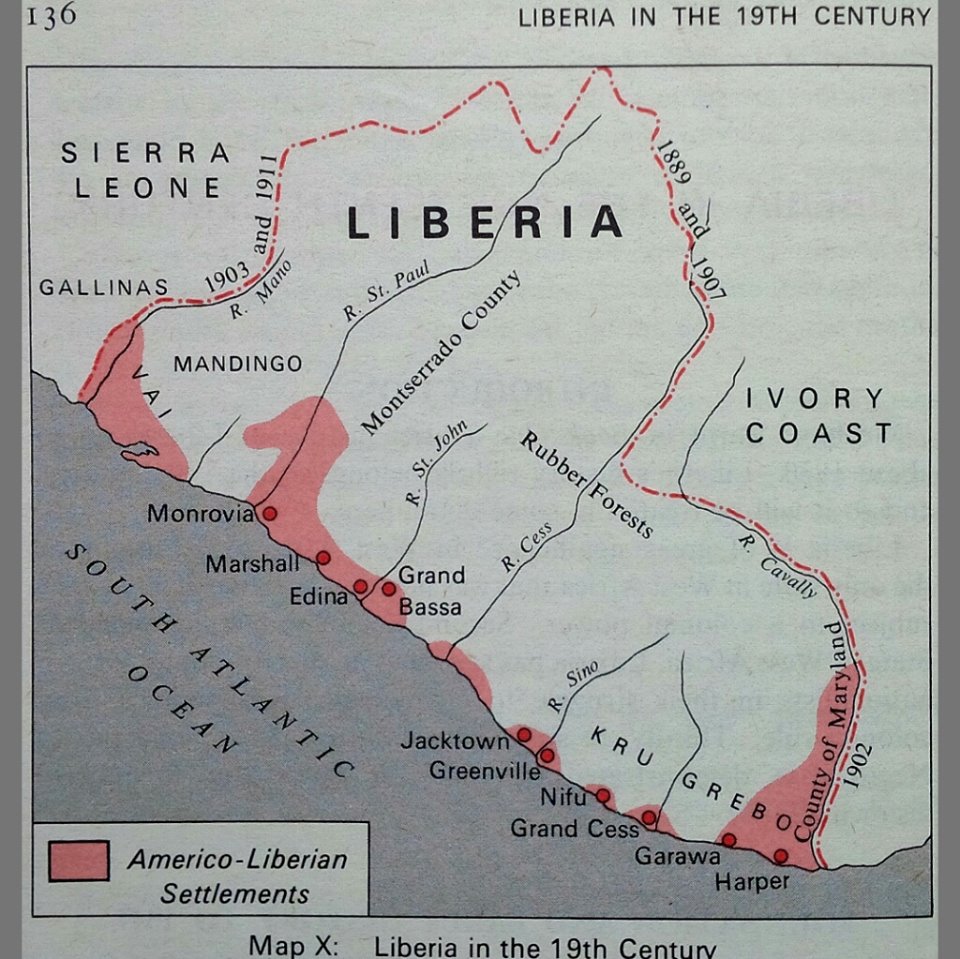|
Tribal resistance to Americo-Liberian rule |
|||
|
|
|||
|
One of the most persistent themes of Liberian history since 1822 is the resistance of tribal people to Americo-Liberian rule. It qualifies as the major obstacle to nation-building.
Historically, the toughest resistance came from the Vai, Gola and Loma in the north-west of the country, within and to the north of Liberia’s most western coastal county, Grand Cape Mount County. In the central part of the coastal region that during the first decades of colonisation constituted the republic’s territory, the Dei, in Montserrado County, and the Bassa and
Kpelle, in Bassa County, fought the Monrovia-based government. Finally, in Sinoe County and in Liberia’s most eastern coastal county, Maryland County, the Kru and Grebo resisted Americo-Liberian authority over their lands and villages. |
Also see: |
||
|
Most conflicts and fights were over the ownership of land. Acquisition of land by the Government was sooner or later followed by conflicts. This was a logical consequence of the fact that, reportedly, almost all the land acquisitions by Government were forcible or fraudulent (Kappel: 1980; Akpan: 1986; Abasiattai: 1987). This finding is not surprising since traditional African customs did not allow for the transfer of traditional territory outside the tribal community. In general, during the 19th century, the Government imposed a kind of protectorate on the indigenous population of the Hinterland that it claimed to belong to the republic’s territory. Subsequently, the Monrovia Government intervened in indigenous affairs, with administrative measures or by military means - or both. A second important source of conflict had a more direct economic character, notably the competition for trading opportunities. In this field a specific reason was the trade in slaves. Some of the tribes were actively involved in the slave trade that brought them in conflict with the newly arrived freed slaves. However, a much lesser known immediate cause for military action of the central government against the tribal population were the many inter-tribal wars that were fought in the area claimed by the Republic. Understandably, this motive is closely connected to the government’s at times imposed protectorate over the Hinterland and subsequent intervention in indigenous affairs. |
||
|
Sources and recommended literature: Abasiattai, Monday B., ‘Resistance of the African Peoples of Liberia’, in: Liberia Forum, Vol. 3, nr. 4, 1987, pp.53 – 71 (Liberia Working Group, Bremen, 1987). Akpan, Monday B., ‘’ The practice of indirect rule in Liberia: The Laying of the Foundations, 1922 – 1915’, in: Hinzen, Eckhard, and Kappel, Robert (eds), ‘Dependence, Underdevelopment and Persistent Conflict – On the Political Economy of Liberia’, pp. 57 – 168 (Bremen, 1980). Akpan, Monday B., ‘Gola Resistance to Liberian “Rule” in the Nineteenth Century, 1835-1905’, in: Liberia Forum, Vol. I, nr. 1, 1985, pp. 5 – 27 (Liberia Working Group, Bremen, 1985). d’Azevedo, Warren L., ‘A Tribal Reaction to Nationalism’, Part 1, in: Liberian Studies Journal, Vol. I, nr. 2, 1969, pp. 1 – 22 (Greencastle, 1969). d’Azevedo, Warren L., ‘A Tribal Reaction to Nationalism’, Part 2, in: Liberian Studies Journal, Vol. II, nr. 1, 1969, pp. 43 - 65 (Greencastle, 1969). d’Azevedo, Warren L., ‘A Tribal Reaction to Nationalism’, Part 3, in: Liberian Studies Journal, Vol. II, nr. 2, 1970, pp. 99 – 117 (Greencastle, 1970). d’Azevedo, Warren L., ‘A Tribal Reaction to Nationalism’, Part 4, in: Liberian Studies Journal, Vol. III, nr. 1, 1971, pp. 1 – 21 (Greencastle, 1971). Buell, Raymond Leslie, ‘The Native Problem in Africa’, 2 vols. (Harvard, 1928; London, 1965). Buell, Raymond Leslie, ‘Liberia: A Century of Survival 1947 – 1947’(Philadelphia, 1947; New York, 1969). Campbell, Penelope, ‘Maryland in Africa, the Maryland State Colonization Society 1831 – 1857’(Chicago, London, 1971). Cassell, C. Abayomi, ‘Liberia: History of the First African Republic’ (New York, 1970). Huberich, Charles H., ‘The Political and Legislative History of Liberia’, 2 vols. (New York, 1947). Kappel, Robert, ‘Resistance of the Liberian People – Problems of the Ignored Facts, in: Hinzen, Eckhard, and Kappel, Robert (eds), ‘Dependence, Underdevelopment and Persistent Conflict – On the Political Economy of Liberia’, pp. 169 - 197 (Bremen, 1980). Kraaij, van der, Fred, ‘The Open Door Policy of Liberia – An Economic History of Modern Liberia’, 2 vols. (Bremen, 1983). Richardson, Nathaniel R., ‘Liberia’s Past and Present’ (London, 1959).
|
|||
| © fpm van der kraaij | |||



